Article 250 of theNational Electrical Codeprovides the minimum requirements for grounding and bonding. The title of the article was revised in the 2005 NEC development process to reflect what is actually covered by the article. In the past, it seems many viewed the word grounding as an umbrella description, and viewed the concepts for both bonding and grounding rules under the derivative of the word ground. This is probably why there are some very apparent misunderstandings about grounding and bonding, and which rules apply when.
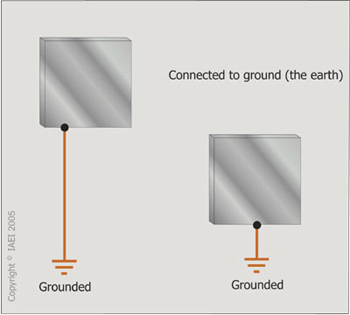
Figure 1. Grounded (connected to the earth)
Definitions
Grounding is the process of connecting something to ground (the earth). For example, the NEC defines the term grounded conductor as “a system or circuit conductor that is intentionally grounded.” Working hand in hand with that definition is the word grounded which is defined as “connected to earth or to some conducting body that serves in place of the earth” (see figure 1).
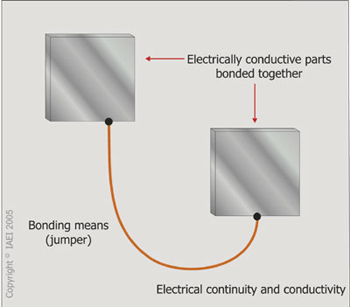
Figure 2. Bonding or bonded (connected together)
On the other hand, the words bonding (or bonded) are defined as “the permanent joining of metallic parts to form an electrically conductive path that ensures electrical continuity, and the capacity to conduct safely any current likely to be imposed” (see figure 2).
So, in simplest form, grounding or grounded means connecting to the earth, and bonding means connecting metallic parts together to establish continuity and conductivity between them. Both concepts have to be applied for safety in electrical installations and systems (see figure 3). This article focuses on the requirements for bonding metal piping systems as required by the NEC.
Bonding in General

Figure 3. Grounded (grounding) and bonded (bonding)
Part V of Article 250 is titled “Bonding.” This is where the major requirements relating to bonding are found within the article. To emphasize the point that many view bonding and grounding as one and the same, look at Figure 250.4 in Article 250. Notice how the caption of the figure says “Figure 250.4 Grounding,” yet when one looks at the figure, the box on the right hand side of the graphic is titled “Bonding” and is interlocked with most of the boxes on the left (see figure 4). This demonstrates graphically that grounding and bonding work cooperatively through many of the requirements in the article. It sounds like an opportunity for a Code change proposal, doesn’t it? The title of the figure should be “250.4 Grounding and Bonding” just like the title and scope of the article to reflect what is actually covered within.
Bonding Metal Water Piping Systems

Figure 4. Reproduction of NEC Figure 250.4
Let’s take a closer look at the Code rules for bonding metal water piping systems. When applying Code rules to installations and systems, it is important to understand the reasons behind the requirements. The requirements for bonding metal water piping systems, by definition, are to establish required continuity and conductivity with a capacity to handle any fault current likely to be imposed. If metal water piping systems are not bonded to the electrical system in a way that meets the requirements of the Code, they can present a fire or shock hazard within the building or structure because they could become energized. This portion of the article covers metal water piping systems, but similar rules apply to other metal piping systems as well, such as metal gas piping systems. We’ll discuss those requirements later in the article.

Photo 1. Bonding requirements for metal piping systems
Section 250.104(A) of Article 250 indicates that metal water piping systems installed in or attached to a building or structure are required to be bonded as required in (A)(1), (A)(2), or (A)(3) of that section. Note the word system is used within this rule. This means the metal piping system must be bonded. Short sections of metallic piping in a nonmetallic piping system typically are not required to be bonded because they do not constitute a full metal piping system. Because many plumbing fixtures use nonmetallic components, bonding both the hot and cold piping systems helps ensure that both are electrically continuous.
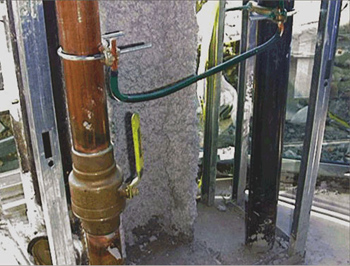
Photo 2. Bonding jumper connections to metal water piping systems are required to be accessible
Bonding jumper(s) for metal water piping systems are required to be installed in accordance with Sections 250.64(A), (B), and (E). These sections provide installation rules for bonding jumpers. Connections of bonding jumpers to piping system(s) [point(s) of attachment] are required to be accessible (see photo 2).
Location of Bonding Jumper Connection
The bonding jumper for a metal water piping system is required to be installed to establish electrical continuity and conductivity (an effective fault current path) to one of the following locations:
1. The service equipment enclosure
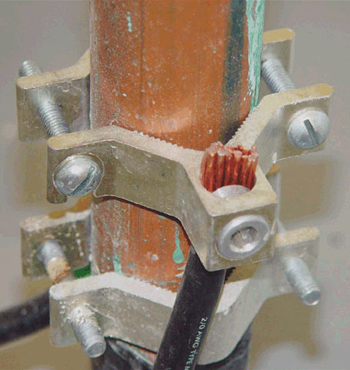
Photo 3. Listed metal water piping clamp for larger metal water piping systems
2. The grounded conductor at the service
3. The grounding electrode conductor where of sufficient size
4. One or more grounding electrodes used for the service—see figure 5.
The bonding jumper is required be sized in accordance with Table 250.66 except as permitted in 250.104(A)(2) and (A)(3). For example, if a building with an 600-ampere service has two 400-kcmil copper conductors in parallel per phase, then applying Table 250.66 for 800 kcmil reveals that the minimum size required for the water piping system bonding jumper cannot be smaller than 2/0 copper or 4/0 aluminum or copper-clad aluminum. Bonding jumper connections are required to meet the provisions in 250.8, meaning the bonding jumper(s) are required to be connected using the exothermic welding process, listed pressure connectors, listed clamps, or other listed means. The 2005 UL General Information for Electrical Equipment Directory states, “Clamps suitable for use on copper water tubing are marked for such use” (see photos 3 and 4).
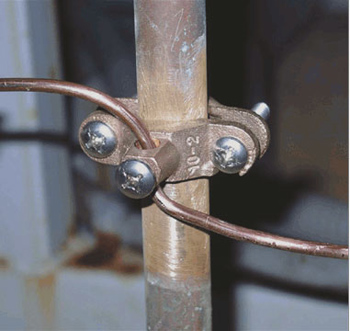
Photo 4. Listed metal water piping clamp for smaller metal water piping systems
Grounding Electrode Conductor Often Serves Two Purposes
Sometimes the metal water piping grounding electrode conductor for a building or structure also serves as the bonding jumper for the metal water piping system. The sizing rules are the same for both bonding jumpers. A major requirement to observe is that the connection to a metal water piping system that is a grounding electrode, in accordance with 250.52(A)(1), must be made not more than 1.52 (5 ft) from its point of entrance to the building or structure. This provides a reasonable dimension so that if metal water piping is replaced with nonmetallic piping, interrupting the electrical continuity, the change is more obvious. The primary reason for this is to keep the length where the water piping serves as the connection to the grounding electrode to a minimum within the building or structure. If the metal water piping is not a grounding electrode, the connection of the bonding jumper in accordance with 250.104(A) does not have be located within the first 1.52 (5 ft) of the water piping system entry to the building or structure.
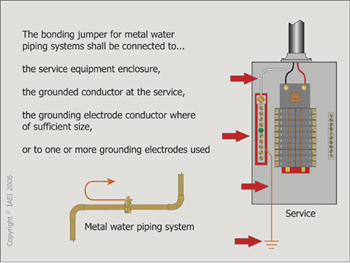
Figure 5. Metal water piping system bonding jumper connection locations
Multiple Occupancy Buildings
The NEC includes a metal water piping system bonding alternative for multiple occupancy buildings that is found in 250.104(A)(2). This alternative is restricted for use only where a certain condition can be satisfied: Metal water piping systems to each individual occupancy are required to be metallically isolated from all other occupancies, by using nonmetallic water piping. If this isolation exists, the Code then permits a bonding jumper to be installed to the supply feeder panelboard or switchboard supplying that occupancy with a conductor sized in accordance 250.122 based on the rating of the overcurrent device protecting the feeder (see figure 6). For example, if a multiple occupancy building had a 600-ampere service supplying six dwelling units, and there was a 100-ampere panelboard in each occupancy, the bonding jumper could be installed to the equipment grounding terminal bus in the panelboard in that occupancy. The bonding jumper would

Figure 6. Metal water piping system bonding alternative in accordance with 250.104(A)(2)
be permitted to be sized based on the rating of the overcurrent device protecting the feeder (100 amperes) which in this example would be a minimum of an 8 AWG copper bonding jumper. Remember, the metal water piping system in each of the occupancies must be metallically isolated from the other occupancies before this alternative water piping system bonding method may be used.
Separate Buildings or Structures
A separate building or structure supplied by a feeder(s) or branch circuit(s) [see 225.30 & .32] and in which metal water piping systems are installed, is required to be bonded. The water piping system is required to be bonded to the building or structure disconnecting means enclosure where it is located at the building or structure, to the equipment grounding conductor run with the supply conductors, or to one or more grounding electrodes used. The bonding jumper is required to be sized in accordance with 250.66 based on the size of the feeder or branch-circuit conductors supplying the building or structure (see figure 7).
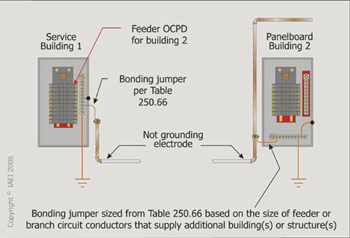
Figure 7. Sizing metal water piping bonding jumpers at separate buildings or structures
Bonding Requirements for Other Metal Piping
Metallic piping systems other than water are also required to be bonded, for the same reasons previously discussed. This piping includes, but is not limited to, metal gas piping, medical gas piping, and pneumatic piping. The rules for bonding other metal piping are provided in 250.104(B). The National Fuel Gas Code, NFPA 54, in Section 6.13 also requires metal gas piping systems to be bonded. In fact, its requirements are very similar to those in the NEC. (See the sidebar that includes extracted text from NFPA 54-2002).
However, one must understand that metal gas piping systems are not permitted to be used as grounding electrodes. Section 250.52(B) prohibits this practice, but the fine print note following this section reminds Code users that bonding requirements for such piping are provided in 250.104(B). These bonding requirements are not optional. “”Other metal piping”” is required to be bonded to any of the following locations:
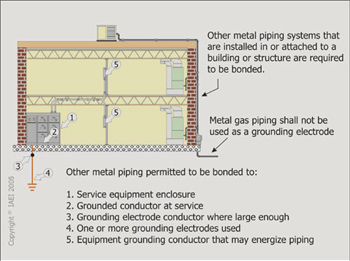
Figure 8. Bonding jumper connection locations for other metal piping systems
1. The service equipment enclosure
2. The grounded conductor at the service
3. The grounding electrode conductor where of sufficient size
4. One or more grounding electrodes used (see figure 8)
Minimum sizing requirements for bonding jumpers for other metal piping systems are different from those for metal water piping systems. Bonding jumper(s) are required to be sized using 250.122, based on the rating of the overcurrent device protecting the branch circuit that is likely to energize the piping system. For example, if a gas furnace is supplied by a 30-ampere branch circuit that includes a 10 AWG copper equipment grounding conductor, the 10 AWG

Photo 5. A gas furnance supplied by a branch circuit taht has a metal gas piping system supplying it
equipment grounding conductor for this circuit shall be permitted as the bonding means. Remember: We’re dealing with bonding, not grounding (see photos 5 and 6). The connection point(s) of the bonding jumper to the other metal piping system(s) are required to be accessible.
Separately Derived Systems
Metal water piping systems are required to be bonded to the grounded conductor of each separately derived system. The connection is required to be made at the nearest point available on the metal water piping system(s) in the area served by the
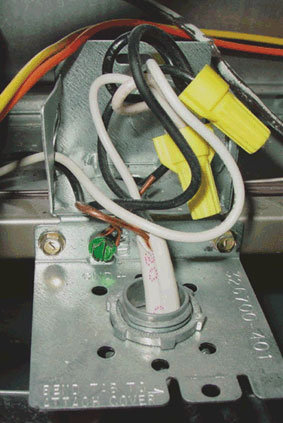
Photo 6. The equipment grounding conductor of the branch circuit supplying the furnance is permitted as the bonding means required by 250.104(B)
separately derived system. This connection is required to be made at the same point where the grounding electrode conductor is connected to the system. The metal water piping system bonding jumper from each separately derived system is required to be sized in accordance with Table 250.66, based on the largest ungrounded phase conductor of the separately derived system (see figure 9).
A bonding jumper connected directly to a separately derived system provides a direct path to the source for ground-fault currents, and will attempt to help facilitate overcurrent device operation in the event a circuit supplied by the derived system secondary comes in contact with the metal piping system. For all of the specific bonding requirements for metal water piping systems to separately derived systems, refer to 250.104(D) and the exceptions.
Where a common grounding electrode conductor tap concept is used for multiple separately derived systems in accordance with 250.30(A)(4), the metal water piping system bonding requirements in 250.104(D)(3) must be applied to the installation.

Figure 9. Metal water piping system bonding jumper to separately derived system
There are also bonding requirements for exposed structural metal that is interconnected to form a building frame, and is likely to become energized. The installation and sizing requirements for bonding jumper(s) are identical to those for metal water piping systems. Code rules for bonding structural metal are provided in 250.104(C) and (D)(2) [see photo 7].
For more detailed information about the bonding requirements of the NEC, please refer to chapter 8 in IAEI’s Soares Book on Grounding and Bonding (9th edition). As always, consult the local authority having jurisdiction in your area for any local codes or regulations that would be required in addition to the minimum requirements of the NEC.

Photo 7. Bonding is also required for structural metal that is not intentionally grounded and interconnected to form a building frame and is likely to become energized
Extracted text from NFPA 54-2002
6.13 Electrical Bonding and Grounding.
6.13.1 Each aboveground portion of a gas piping system that is likely to become energized shall be electrically continuous and bonded to an effective ground-fault current path. Gas piping shall be considered to be bonded when it is connected to gas utilization equipment that is connected to the equipment grounding conductor of the circuit supplying that equipment.
6.13.2 Gas piping shall not be used as a grounding conductor or electrode.







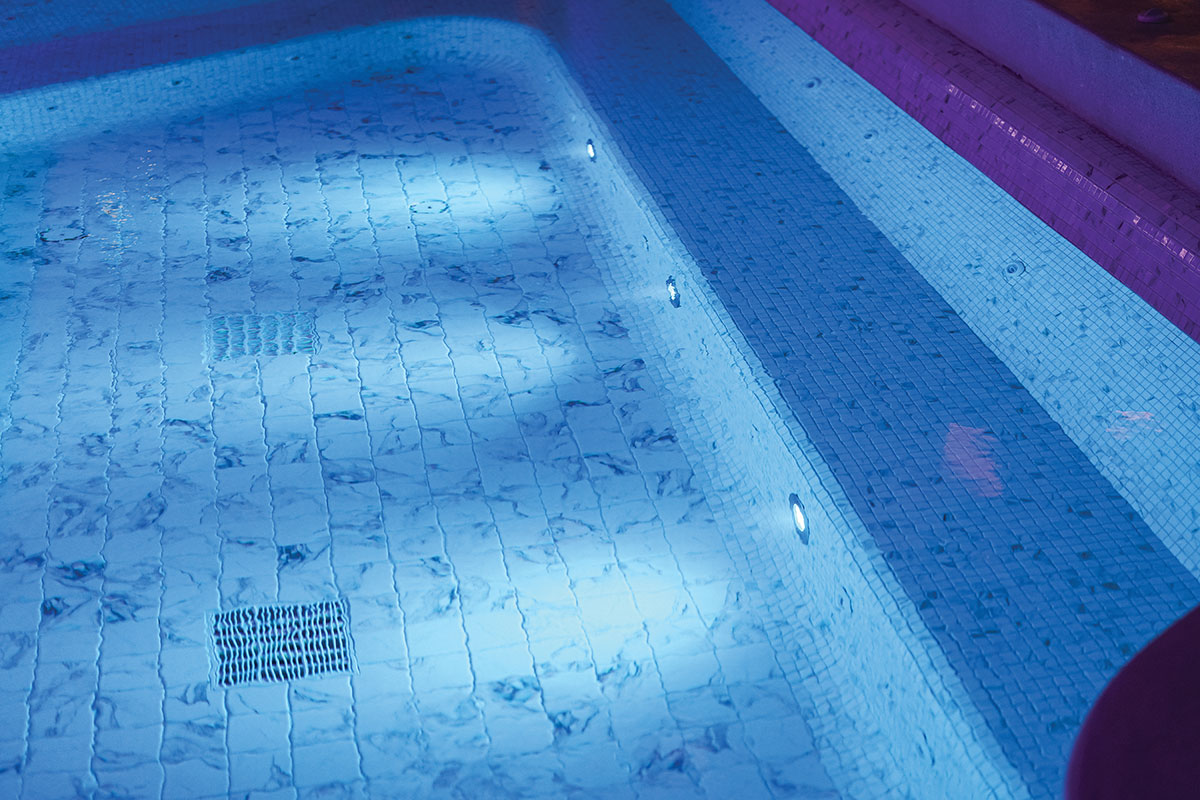
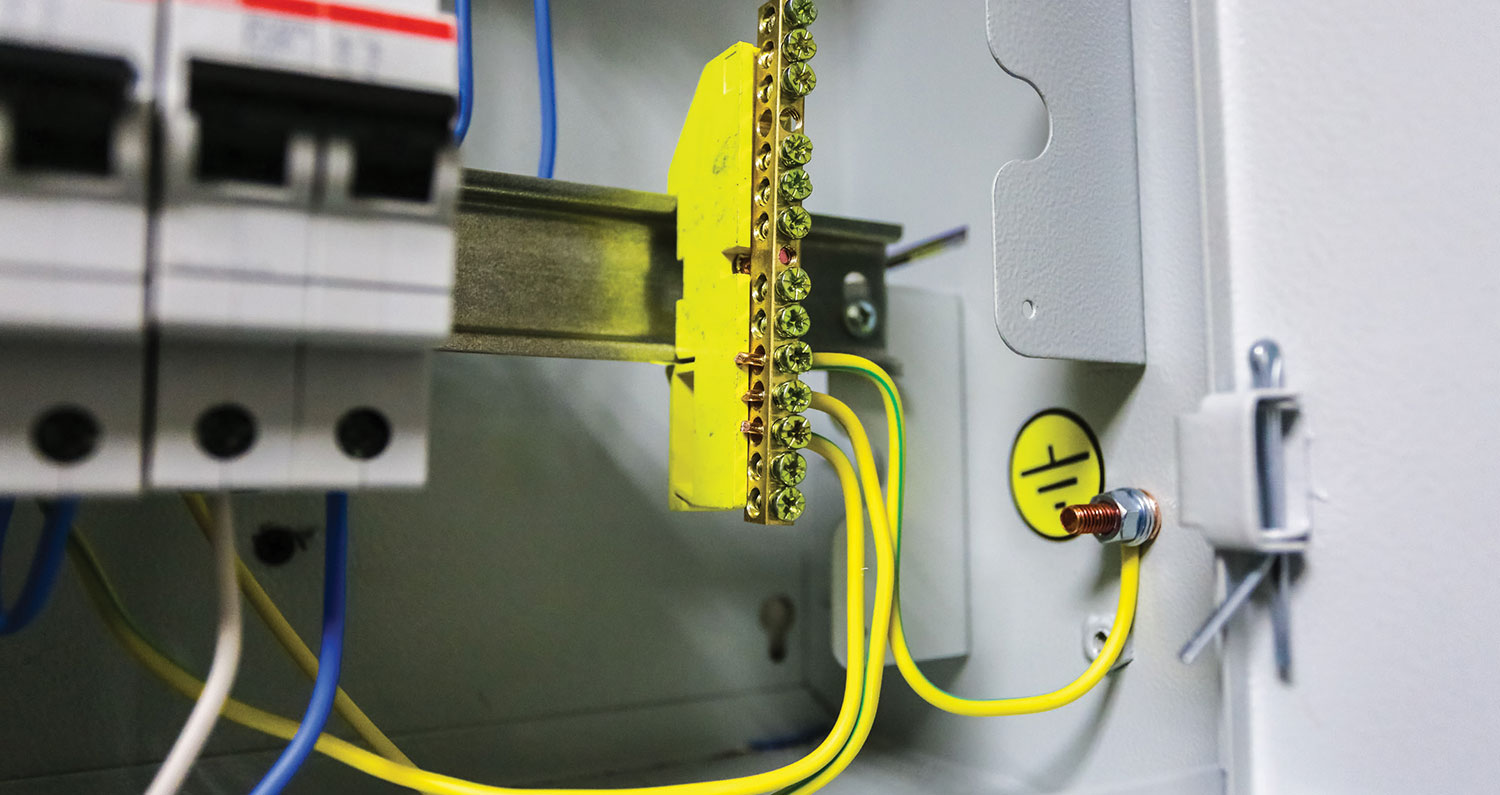

Find Us on Socials